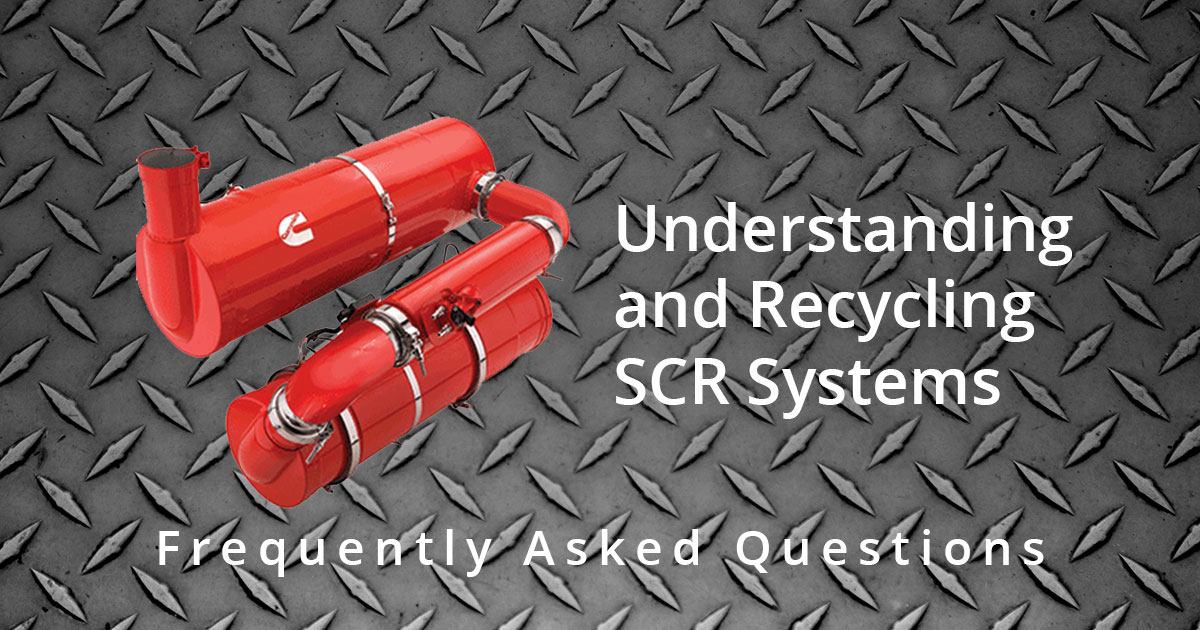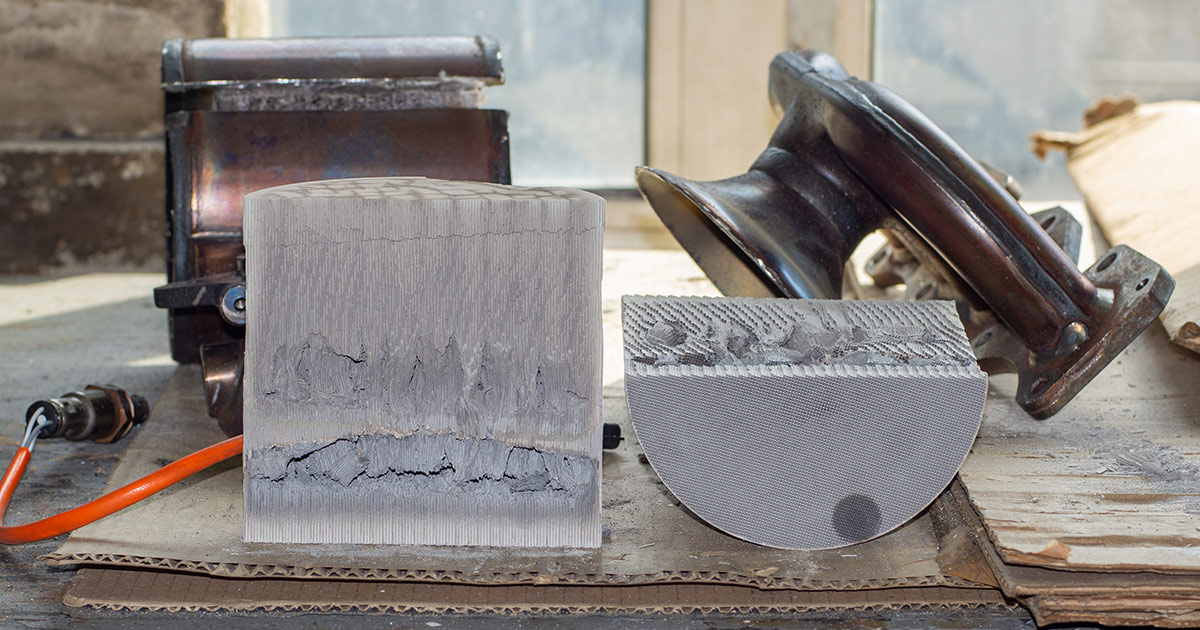One of the most common questions these days is, “Do you guys recycle SCR systems?” While our answer is generally no, this is a complex topic, and we’d like to provide some clarity in a quick FAQ about SCR systems and how to manage their disposal at the end of their useful life.
1. Q: What are SCR systems?
A: SCR stands for “selective catalytic reduction,” an emission control technology primarily used to reduce NOx emissions from diesel engines, industrial boilers, and gas turbines.
2. Q: How do SCR systems work to reduce NOx from diesel engines?
A: Very basically, SCR is a mechanism to convert oxides of nitrogen (NOx) to nitrogen (N2) and water (H2O) by adding a gaseous reductant, typically ammonia or urea, to an exhaust stream.
3. Q: Why are so many SCR systems running on trucks today?
A: In 2010, the US EPA ratcheted down the allowable NOx emissions from diesel truck engines to 0.2 g/bhp-hr. To meet this low NOx emission standard, many engine manufacturers utilized SCR as the technology to achieve the standard.
4. Q: Did all OEMs utilize SCR to achieve the 2010 standard?
A: No. Some OEMs used advanced exhaust gas recirculation (EGR) to meet the standards; however, that technology has been largely abandoned, and now all heavy-duty engine OEMs use SCR to achieve emissions standards.
5. Q: Why have so many SCR systems come off trucks in the last 12 months?
A: In July 2018, Cummins announced a voluntary recall of 500,000 medium and heavy-duty truck engines due to a defective part in the SCR system. Truck dealers are now performing these recalls and generating large volumes of scrap SCR systems. Unfortunately, Red Fox Resources does not buy these systems.
6. Q: Does Red Fox buy used/spent SCR systems?
A: No. Unlike most diesel particulate filters (DPF) and diesel oxidation catalysts (DOC) that Red Fox buys back for recycling, SCR systems do not contain enough platinum group metals to feasibly recover through recycling.
7. Q: How does Red Fox recommend disposing of used SCR systems?
A: We recommend processing these parts with your local scrap metal resources. Check with your local metals recycler to make sure they accept these types of systems. Red Fox can provide documentation of the contents should they ask.
8. Q: How can I identify an SCR system that should be scrapped vs a DPF or DOC that is recyclable?
A: Generally speaking, SCR systems are identifiable because they are much larger than singular DPFs and DOCs. DPFs and DOCs are designed so that the individual components can be removed for service. Most of the 2010 SCR systems are non-modular, meaning they cannot be unbolted to be serviced individually. While the diameters of the DPF, DOC, and SCR systems can be similar, the length of the SCR will be much longer. Generally, SCR systems are 35” – 45” long, whereas the DPFs and DOCs would be 4”-16” long.
9. Q: Detroit uses a One-Box technology that includes the DPF, DOC, and SCR in one box. Does Red Fox recycle Detroit One-Boxes?
A: Yes. Red Fox will buy a complete One-Box system for the PGM in the DPFs and DOCs.
10. Q: Volvo uses an SCR system that resembles a Detroit One-Box, do you accept Volvo SCR systems?
A: No. The Volvo SCR system (pictured below) does not include the DPF and DOC like the Detroit system, so we do not accept or recycle Volvo or Mack SCR systems.

11. Q: What should I do if I’m unsure if a part is an SCR DPF or DOC?
A: Snap a picture and send it to our buying group at 415-793-3439 or email it to in**@*************es.com. Our experts will take a quick look and let you know what you’ve got and if we would buy it for recycling or recommend it be scrapped locally.
To learn more about DPF and DOC recycling, visit the Red Fox Resources FAQ page or contact us to get a quote at 1-844-733-3695.




